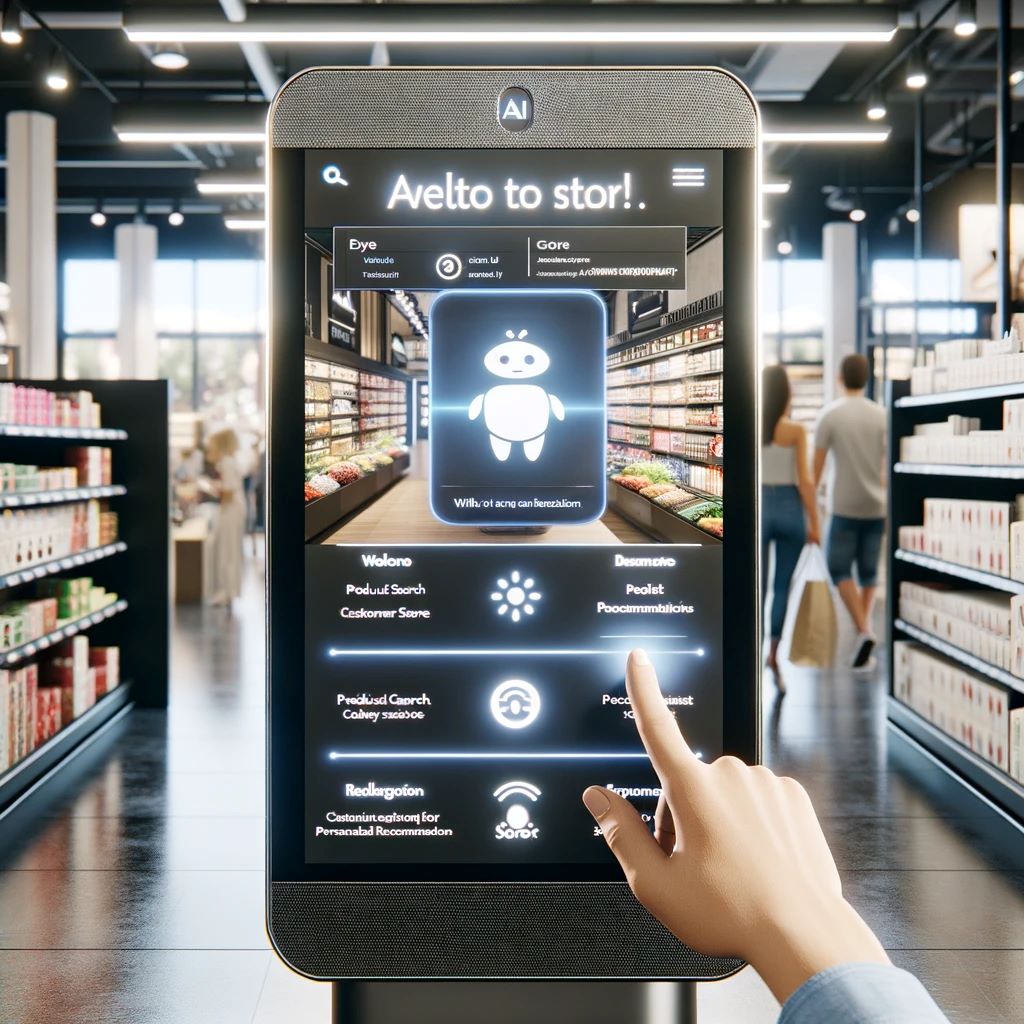Workshop: Developing an AI-driven Recommendation System
Objective
This workshop aims to provide participants with practical experience in designing a basic prototype for an AI-driven recommendation engine for an e-commerce site.
The focus is on leveraging AI to personalize product suggestions based on user behavior, enhancing the shopping experience and increasing sales.
Preparation
- Participants: Ideal for e-commerce managers, developers, data scientists, and UX designers interested in AI and machine learning applications.
- Materials Needed: Access to a development environment capable of handling AI models (e.g., Python with libraries like TensorFlow or PyTorch), sample e-commerce user behavior datasets, and tools for creating user interfaces.
- Pre-Workshop Learning: A brief introduction to machine learning concepts, recommendation system algorithms (collaborative filtering, content-based filtering, hybrid methods), and an overview of the chosen development tools and libraries.
Workshop Agenda
- Introduction to AI Recommendation Systems (30 minutes)
- Overview of how AI-driven recommendation engines work and their significance in enhancing user experience on e-commerce platforms.
- Examples of successful recommendation systems in the industry.
- Understanding User Behavior Data (45 minutes)
- Analyzing sample datasets to identify patterns and useful features for generating product recommendations (e.g., purchase history, item ratings, browsing behavior).
- Designing the Recommendation Engine (1 hour)
- Breakout session where participants form small groups to design their AI recommendation engine prototype.
- Focus on selecting an appropriate algorithm (collaborative filtering, content-based, or hybrid) based on the dataset and desired outcomes.
- Prototype Development (2 hours)
- Hands-on coding session where groups implement their design using the provided development environment and datasets.
- Introduction to integrating the recommendation engine into a simple e-commerce site interface for real-time product suggestions.
- Testing and Iteration (1 hour)
- Groups test their recommendation engines using different user profiles to evaluate the relevance and accuracy of product suggestions.
- Iterative improvements based on testing feedback and peer reviews.
- Presentations and Feedback (1 hour)
- Each group presents their AI recommendation engine prototype, discussing the design choices, challenges faced, and insights gained.
- Feedback session focusing on the technical implementation, user experience considerations, and potential business impacts.
Key Learning Outcomes
- Understanding of different types of recommendation systems and their applications in e-commerce.
- Practical experience in developing an AI-driven recommendation engine using real user behavior data.
- Insights into integrating AI technologies into e-commerce platforms to personalize the shopping experience.
Developing an AI-driven recommendation system can significantly enhance the e-commerce shopping experience by providing personalized product suggestions.
This workshop offers a foundation in understanding, designing, and implementing these systems, paving the way for further exploration and innovation in AI applications for e-commerce.
Next Steps
- Participants are encouraged to continue refining their recommendation engine prototypes, considering additional data sources and advanced machine learning techniques.
- Explore opportunities to integrate the prototype into a live e-commerce environment for real-world testing and feedback.
- Stay engaged with the latest developments in AI and machine learning to continually enhance the recommendation system’s accuracy and user experience.
Group Project: Designing an AR Shopping Feature for a Furniture E-commerce Platform
Objective
This project focuses on conceptualizing an augmented reality (AR) shopping feature for a furniture e-commerce platform.
The goal is to enable customers to visualize how furniture pieces would look in their actual home environment using AR technology, thereby enhancing the decision-making process and customer satisfaction.
Project Scope
- Target Platform: The AR feature should be designed for integration into a mobile app for both iOS and Android, considering the broadest possible accessibility.
- User Interaction: Define how users will interact with the AR feature, including selecting furniture, placing it in their space, and viewing it from different angles.
- Technical Requirements: Outline the technical infrastructure needed to support AR functionality, such as 3D models of furniture, ARKit or ARCore integration, and user interface design.
Project Phases
- Concept Development:
- Brainstorm ideas for the AR shopping feature, focusing on user needs and how AR can meet those needs.
- Define the core functionalities, such as real-time scale adjustment, color variation previews, and placement within a physical space.
- User Experience (UX) Design:
- Sketch wireframes and user flow diagrams to illustrate the process of using the AR feature from start to finish.
- Consider the ease of use, intuitive design, and how to provide a seamless shopping experience through AR.
- Technical Planning:
- Identify the tools and platforms needed to develop the AR feature, including AR development kits, 3D modeling software, and compatibility requirements for different devices.
- Develop a plan for sourcing or creating 3D models of the furniture catalog that are optimized for AR use.
- Marketing and Launch Strategy:
- Propose a strategy to market the new AR feature to existing and potential customers, highlighting its benefits in helping make informed purchase decisions.
- Plan for an initial pilot launch to collect user feedback and iterate on the design before a full rollout.
Deliverables
- Project Proposal: A detailed document outlining the AR feature concept, UX design plans, technical requirements, and marketing strategy.
- Prototype: A mock-up or prototype of the AR feature, if feasible within the project timeline, to demonstrate the user interaction and functionality.
- Presentation: A presentation summarizing the project proposal and showcasing the prototype, including visual aids like wireframes, user flow diagrams, and marketing plans.
Evaluation Criteria
- Innovation and Creativity: How innovative and creative is the AR feature in enhancing the furniture shopping experience?
- User-Centered Design: How well does the project prioritize the user experience and ease of use?
- Feasibility and Technical Planning: How realistic and well-planned are the technical and logistical aspects of the AR feature?
- Marketing Strategy: How effective is the proposed strategy for introducing and promoting the AR feature to the target audience?
The integration of an AR shopping feature has the potential to revolutionize the furniture buying process, offering customers a powerful tool to visualize products in their own space.
This project challenges participants to think creatively and technically about developing a practical and engaging AR experience for e-commerce.
Next Steps
- Based on feedback from the presentation, refine the project proposal and prototype.
- Explore potential partnerships with AR development specialists to bring the concept to reality.
- Conduct user testing with a prototype to gather insights and further improve the AR shopping feature.
Discussion: The Future of VR in E-commerce
Objective
This discussion aims to explore the potential impact of Virtual Reality (VR) on the future of e-commerce, focusing on the concepts of VR shopping malls and virtual try-on rooms.
Participants will examine the technological, logistical, and consumer adoption challenges associated with these VR applications.
Discussion Points
- VR Shopping Malls
- Concept Overview: Introduction to the idea of VR shopping malls, where users can navigate through a virtual environment to visit different stores, interact with products, and make purchases.
- Technological Challenges: Discuss the current state of VR technology, including hardware requirements, internet bandwidth needs, and the development of realistic and immersive virtual environments.
- Logistical Challenges: Consider the logistics of integrating VR shopping malls with existing e-commerce platforms, inventory management systems, and payment processing.
- Consumer Adoption: Debate potential barriers to consumer adoption of VR shopping malls, such as the cost of VR headsets, user comfort with the technology, and the digital divide.
- Virtual Try-On Rooms
- Concept Overview: Explanation of virtual try-on rooms that allow customers to try on clothes, accessories, or even makeup virtually using VR technology to see how items look on their avatars.
- Technological Challenges: Address the accuracy of body scanning technology, the creation of realistic product models, and the seamless integration of these elements into a virtual try-on experience.
- Logistical Challenges: Discuss the implications for product returns, inventory management, and the need for high-quality product data to support virtual try-ons.
- Consumer Adoption: Explore concerns related to privacy, the accuracy of virtual representations, and the level of comfort users have with using VR for personal shopping.
Discussion Format
- Breakout Sessions: Participants are divided into smaller groups, with each group focusing on either VR shopping malls or virtual try-on rooms. Each group discusses the challenges and potential solutions.
- Group Presentations: After the breakout sessions, each group presents their findings and ideas to the wider assembly, sparking broader discussion.
- Expert Panel: If possible, include a panel of VR technology experts, e-commerce entrepreneurs, and consumer behavior researchers to provide insights and answer questions from participants.
Key Questions
- How can e-commerce businesses overcome the technological and logistical challenges associated with VR to offer viable shopping experiences?
- What strategies can be employed to encourage consumer adoption of VR shopping experiences?
- How can VR technology be made accessible to a broader audience, considering the current limitations related to cost and technological literacy?
The potential of VR technology to transform the e-commerce landscape is immense, offering unprecedented opportunities for immersive shopping experiences.
However, realizing this potential requires overcoming significant technological, logistical, and consumer adoption challenges.
By addressing these issues collaboratively, the e-commerce industry can pave the way for the successful integration of VR shopping malls and virtual try-on rooms.
Next Steps
- Encourage ongoing collaboration between technology developers, e-commerce businesses, and consumer advocacy groups to address the challenges discussed.
- Monitor advancements in VR technology and consumer trends to adapt strategies for VR e-commerce accordingly.
- Consider launching pilot projects to test VR shopping concepts with real users, gathering data to inform future development and marketing strategies.












